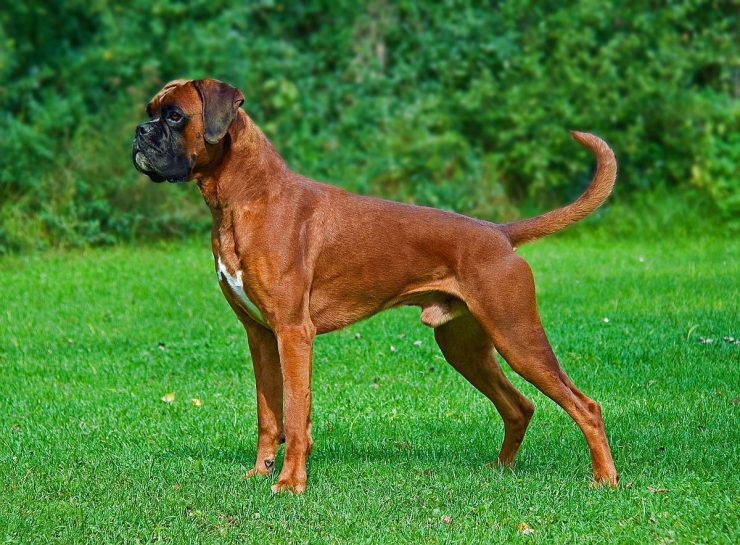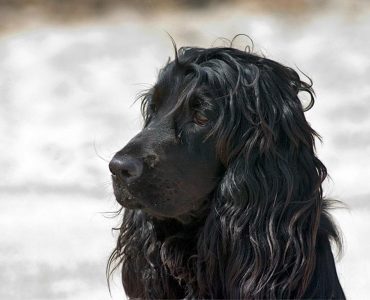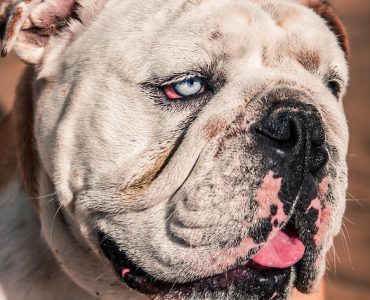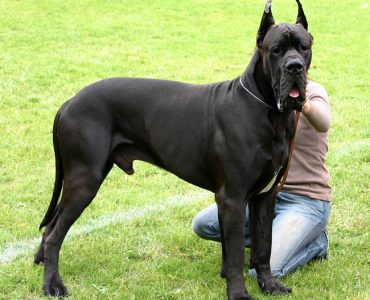The Boxer has its origins in Germany. The name is thought to come from the dog’s tendency to play by standing on its hind legs and holding its paws in a pose similar to a human boxer. The breed was bred from the English Bulldog and the Bullenbeisser, which is now an extinct breed.
The Boxer is renowned for its heavy-set head. The proportions of its head to its body are one of the fundamental characteristics that dictate the purity of the breed. The lower jaw will protrude out past the upper jaw, and there will be folds of skin from the nose to the muzzle. Traditionally the Boxer is both docked and cropped. Docking is surgical truncating of the tail, whilst cropping is a similar practice that gives the dog upright, alert ears. Both practices are now prohibited in many parts of the world.
The boxer is a shorthaired breed with a smooth, shiny coat. They can be found in fawn and brindle colourings. Brindle is the name given to a pattern similar to tiger stripes. The dog often has a white belly and feet. White markings may be found on other parts of the body and are known as ‘flash’. Whilst black can be found on a boxer, there are no purebred black boxers, as they do not carry the gene for an all black coat. However, if the white markings cover more than one third of a boxer’s body, they are called white boxers. Boxers are born white and commonly remain so.
The Boxer is an extremely boisterous and playful breed of dog. They require regular and plentiful exercise to prevent them becoming bored and exhibiting mischievous behaviour. A bored boxer may chew or dig and can be destructive. The breed is not known for being either vicious or aggressive and tends to be good with children. Usually they mix well with other smaller dogs and pets. Problems may occur if they are mixed with other large dogs, especially those of the same sex.
The Boxer’s playful nature makes them a good choice of family pet. Their natural suspicion of strangers also lends itself to their use as guard dogs, and this is enhanced by their strength and agility. They may also be found in use as guide dogs, therapy dogs and in both police and military situations.

There are a number of health issues which commonly afflict the boxer. They are prone to cancers, heart issues, and intestinal problems and, like many large dogs, hip dysplasia. Despite their athletic bodies, care must be taken with puppies, as their bones can be damaged by excessive exercise at a young age. White boxers are also linked to congenital deafness, which may be linked to the gene that is responsible for their markings. This defect affects a large proportion of white boxers and, historically, they were euthanized at birth. Today breeders will take the less drastic action of spaying or neutering to prevent them from breeding.












